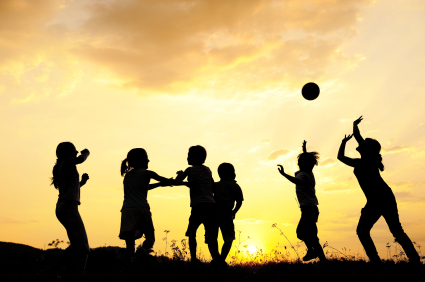Houston, we have a problem.
There’s a new kind of toy on the block, and it’s difficult to imagine a more damning indictment of the way we treat children.
I’m talking, of course, about “snack toys.”
No, not the little toys that come with fast food; these toys:
Keeping a child amused for hours on end isn’t the only aim of toy makers. They are increasingly creating playthings aimed at busy kids who only have bite-size bits of time to play—a trend some in the industry are calling “snack toys.”
School-age children are increasingly playing in short bursts of time between organized activities—whether on the sidelines of a sibling’s soccer game or at home, between piano lessons and homework…
Apparently, today’s children are so overscheduled that they don’t have time to play a board game.
Hasbro Inc., the world’s largest board-game maker, has spent the last several years reconfiguring classic board games, including Monopoly, Scrabble and Boggle, into versions that take less time to play and have a more frenetic pace. Unlike with traditional Scrabble, it takes just two minutes and 30 seconds for two players to complete a round of Scrabble Flash ($29.99), where the object is to make as many three-, four- and five-letter words as possible from five electronic tiles. The tiles beep when a 75-second turn is complete and light up when a legitimate word is spelled.
“Parents and children tell us they want a quick in-and-out, frictionless gaming experience,” says Jonathan Berkowitz, vice president of marketing at Hasbro. “That’s the snackable component.”
Frictionless? What does that even mean in this context?
If children now have so little time to play that Scrabble has been reduced to 150 seconds, we have a serious problem as a society. Why? Because spontaneous play is critical to child development.
According to Fergus P. Hughes, emeritus Professor of Human Development and Psychology:
Play is the most natural of childhood activities and one of the most frequently observed… [T]he criteria used to define play typically include freedom of choice, personal enjoyment, and a focus on the activity as an end in itself rather than on its outcomes. Freedom of choice seems to be an essential component of a definition of play. As Vandenberg (1998) expressed it, “The excitement of play results from the sheer exercise of freedom over necessity.”
Moreover:
Research on children’s intellectual development indicates that a number of cognitive skills, including measurement, equivalency, balance, spatial concepts, conservation, decentration, reversibility, and logical classification are enhanced during play, and particularly during the course of symbolic play. In addition, symbolic play is thought to afford children the opportunity for creative expression, as well as to actually facilitate creative processes, including divergent thinking.
The implications of “snack toys” are distressing at best and chilling at worst.
Why have we created a world where children are so scheduled, have so little time for themselves, and so little agency to choose extended spontaneous play they there is a need to amuse them in bite sized bits of time?
Who benefits by children being so scheduled, with so little time for themselves and their own play, that there is only time for “snack toys”? It’s not children!
We claim to want children to develop creativity, critical thinking, especially to learn how to “think outside the box.” Yet our actions belie our words. Children who have only time enough for “snack toys” don’t have time for creativity or critical thinking and certainly aren’t going to learn to “think outside the box” when their lives are so controlled that even their play comes out of a box in bite size pieces.
I don’t have the solutions for the problems that we are facing, but I do know this:
If children don’t have enough time for spontaneous creative play, they don’t have enough time for the learning, growth and development critical to childhood. Instead of creating “snack toys,” we should be creating more opportunities for spontaneous creative play.
Our children deserve nothing less.


